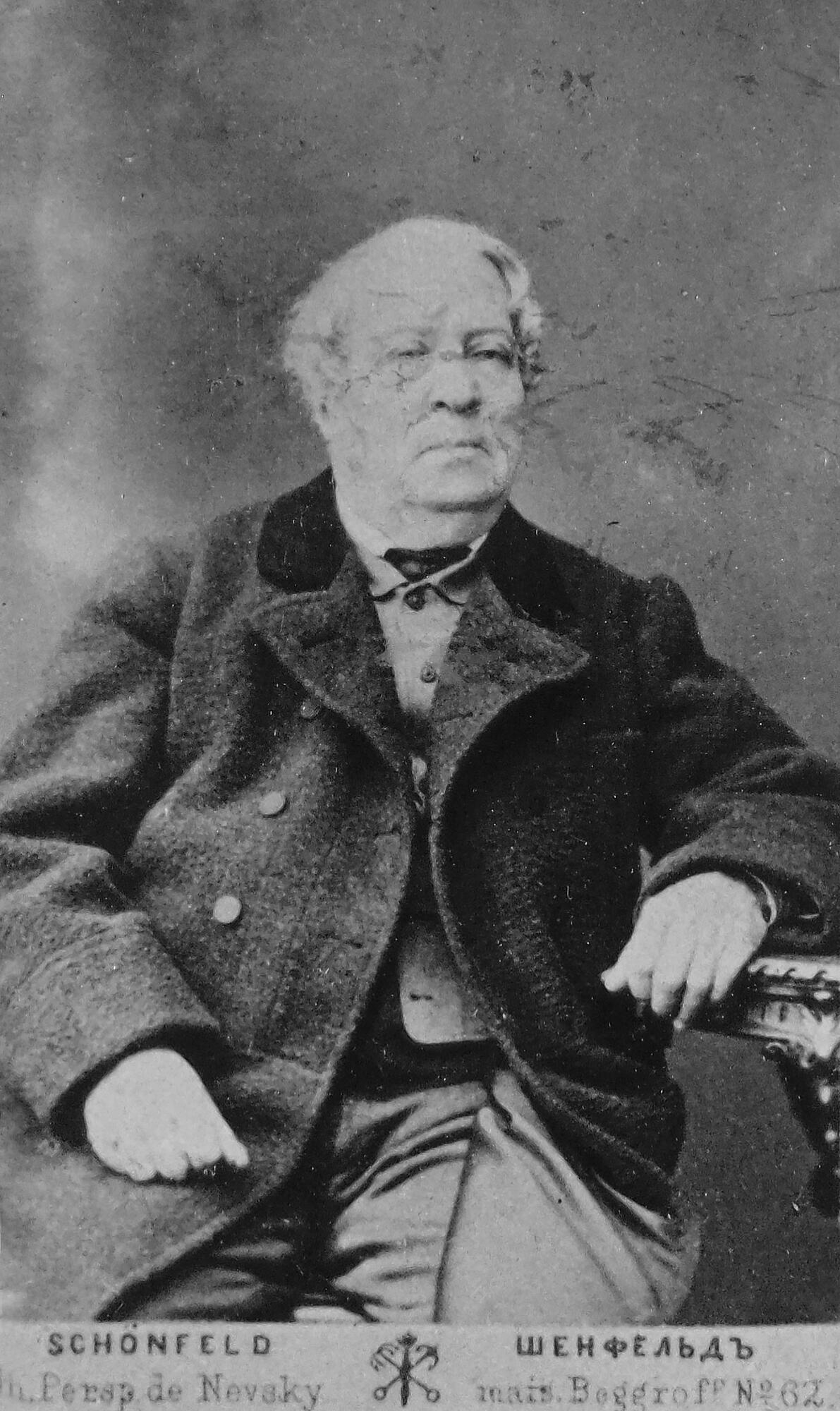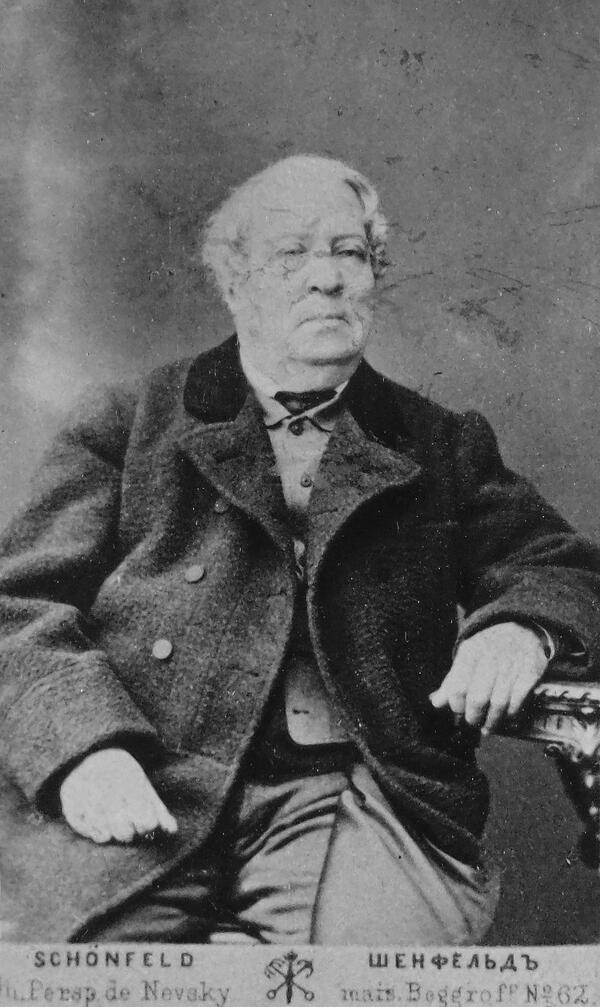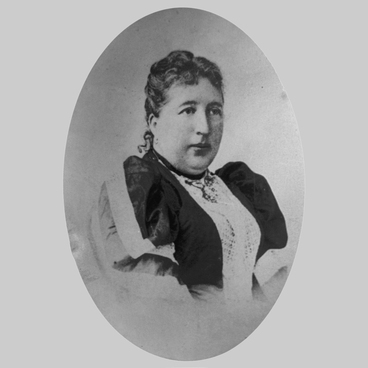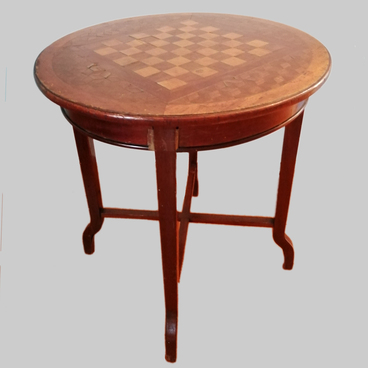Arkady Timofeevich Aksakov, the younger brother of writer Sergey Timofeevich Aksakov, was born on January 23, 1803. Around 1820, he enrolled as a Warrant Officer in the St. Petersburg National Guard Forces Command and later earned the civil rank of a Collegiate Secretary. In 1835 he was elected district leader of nobility in Buguruslan County (today, a district in the Orenburg region), and on July 5, 1836 he married Anna Stepanovna Korotkova.
During these years, Arkady Timofeevich lived in the Buguruslan village of Novo-Aksakovo, but would often leave to visit his older brother in Abramtsevo near Moscow. This in particular was mentioned in the diary of Sergei Timofeevich’s daughter Vera, who wrote about it on September 13, 1855: “Uncle Arkady Timofeevich visited today and brought with him many stories about the elections in Simbirsk, about Samara, and about the upcoming militia movements in Samara and Orenburg”.
Three sons and a daughter were born in the family of Aksakov and Korotkova. Sergey Arkadievich was born in 1837; he graduated from the Imperial Lyceum and served as a Collegiate Advisor and in the second branch of His Imperial Majesty’s Own Chancellery. Nikolai Arkadievich was born in 1838, and also graduated from the Imperial Lyceum in St. Petersburg and served in the Ministry of Internal Affairs as a Court Counselor. Nadezhda Arkadievna was born in 1839 and married an Active Secret Advisor Alexei Bezobrazov. Their youngest son Alexander was born in 1842 and lived only for up to eight years. He was buried near the village of Novo-Aksakovo in Orenburg province.
The portrait of Arkady Aksakov, presented in the museum, is a copy of a photograph that was taken in St. Petersburg in the Schoenfeld salon in the mid-19th century. In August 1855, the St. Petersburg Vedomosti newspaper reported that Wilhelm Schoenfeld had opened a new photograph and daguerreotype salon on Nevsky Prospect. ‘The portraits stand out for their purity and accuracy. Schoenfeld guarantees to only give back portraits that fully and perfectly meet the expectations of visitors, ” — the advertisement stated. It also noted that prices for their services were widely affordable: a group photo would cost 1 rub. 59 cop. and an office portrait was valued at 4 rubles (about $5) for 6 copies. In reality though, only the wealthier citizens of the Russian Empire could afford to spend such a sum.
During these years, Arkady Timofeevich lived in the Buguruslan village of Novo-Aksakovo, but would often leave to visit his older brother in Abramtsevo near Moscow. This in particular was mentioned in the diary of Sergei Timofeevich’s daughter Vera, who wrote about it on September 13, 1855: “Uncle Arkady Timofeevich visited today and brought with him many stories about the elections in Simbirsk, about Samara, and about the upcoming militia movements in Samara and Orenburg”.
Three sons and a daughter were born in the family of Aksakov and Korotkova. Sergey Arkadievich was born in 1837; he graduated from the Imperial Lyceum and served as a Collegiate Advisor and in the second branch of His Imperial Majesty’s Own Chancellery. Nikolai Arkadievich was born in 1838, and also graduated from the Imperial Lyceum in St. Petersburg and served in the Ministry of Internal Affairs as a Court Counselor. Nadezhda Arkadievna was born in 1839 and married an Active Secret Advisor Alexei Bezobrazov. Their youngest son Alexander was born in 1842 and lived only for up to eight years. He was buried near the village of Novo-Aksakovo in Orenburg province.
The portrait of Arkady Aksakov, presented in the museum, is a copy of a photograph that was taken in St. Petersburg in the Schoenfeld salon in the mid-19th century. In August 1855, the St. Petersburg Vedomosti newspaper reported that Wilhelm Schoenfeld had opened a new photograph and daguerreotype salon on Nevsky Prospect. ‘The portraits stand out for their purity and accuracy. Schoenfeld guarantees to only give back portraits that fully and perfectly meet the expectations of visitors, ” — the advertisement stated. It also noted that prices for their services were widely affordable: a group photo would cost 1 rub. 59 cop. and an office portrait was valued at 4 rubles (about $5) for 6 copies. In reality though, only the wealthier citizens of the Russian Empire could afford to spend such a sum.



